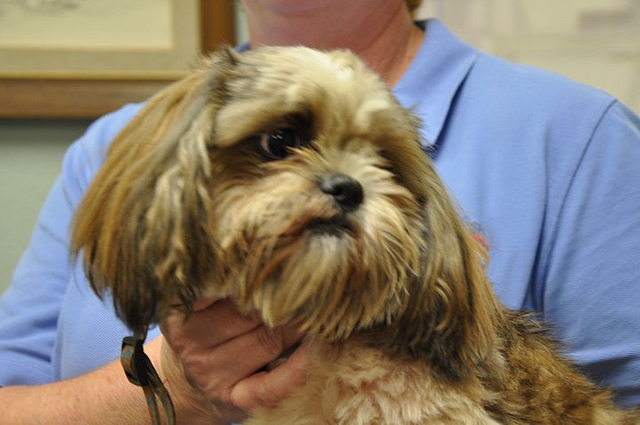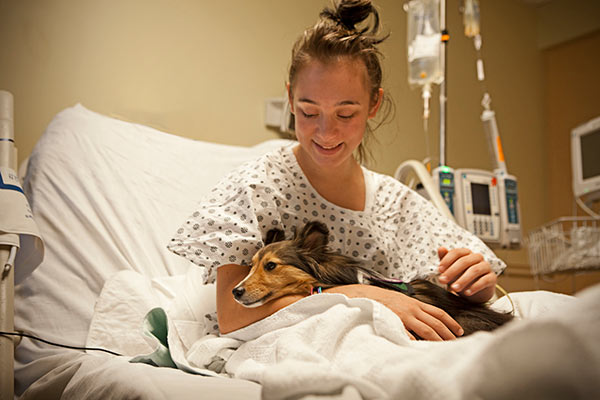Hospitals say yes to visits from household pets
When you’re stranded in a hospital bed, all you want is to be reminded of the comforts of home. Many hospitals use in-house trained animals for pet therapy, but most generally don’t allow household pets to visit patients. However, it looks like some are starting to open their doors. Some facilities are exceptionally progressive, such as Long Island’s North Shore University Hospital, which allows personal pets to stay with patients around the clock.

Hospitals are warming up to having pets from home visit patients.
Institutions have vetted the issue of pet visitations, comparing drawbacks and benefits. The Rush University Medical Center spent three years studying the issue before a pet visitation policy was issued. Some issues in question were whether or not animals could transmit infections to patients, causing potential liability issues, or interfere with patient care. In the end, Center officials felt that the pros of reducing stress and providing comfort were more valuable than the risks.
Generally, personal pets are expected to stay with the patient they are visiting. If someone has an open wound or active infection, a visit from a family pet is discouraged, according to most hospital policies.
Some rules pets must follow are:
- A doctor’s order allowing the pet to visit is typically necessary
- Attestation from a veterinarian that the animal is healthy and up to date on all its shots
- Dogs should be groomed within a day or so of the visit or on a leash when they walk through hospital corridors
- Cats must be taken in and out of the institution in a carrier

A visit from a pet is sure to bring a smile to a patient’s face.
Pets bring fun, optimism, comfort, and are a symbol of something to look forward to. One person who attests to their positive effect on patients is Ann Mahler, 57, a clinical nurse specialist at Hebrew SeniorLife in Boston. Her elderly father was depressed after breaking a hip, and he tried to recover in a rehabilitation facility. The facility did not allow his dog, Molly, to come visit his patient room, but he could visit her in a backroom off the lobby. Afterward spending time with his pet, the older man began eating more regularly, his mood lightened, and he worked harder on his recovery so that he could go and join Molly.
Pets are not the most low maintenance visitors, and there are appropriate hospital policies during their actual visits. For example, a covering is laid down first on the patient’s bed if the dog or cat wants to climb on it. If the patient shares a room with someone, the roommate must also agree that a visit is permissible. If the animal is acting up, staff members have the right to turn it away. Still, it seems like a brief visit with a pet can do a world of difference, and hopefully more hospitals will entertain the idea of visiting in the future.
Category: Pets



